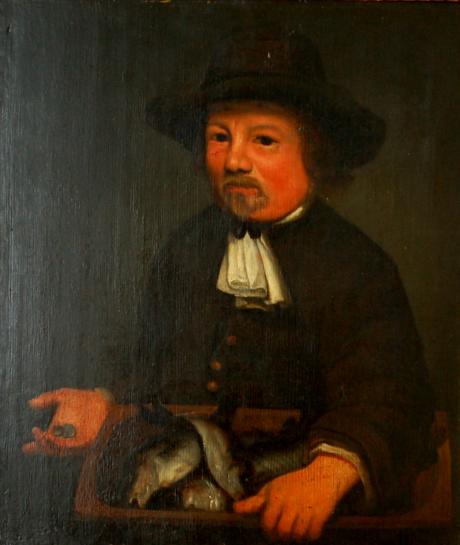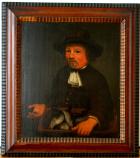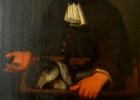Along with agriculture, the Dutch fishing industry formed part of the economic base of the northern Netherlands. Like the Baltic grain trade, it also contributed to the rise of Dutch the shipping industry.The backbone of the fishing industry was the North Sea herring fishery, which was quite advanced and included a form of “factory” ship called the herring bus. The herring bus was developed in the fifteenth century in order to allow the herring catch to be processed with salt at sea. This permitted the herring ship to remain at sea longer and increased the range of the herring fishery. Herring was an important export product for the Netherlands particularly to inland areas, but also to the Baltic offsetting Baltic grain imports.
The herring fishery reached its zenith in the first half of the seventeenth century. Estimates put the size of the herring fleet at roughly 500 busses and the catch at about 20,000 to 25,000 lasts (roughly 33,000 metric tons) on average each year in the first decades of the seventeenth century. The herring catch as well as the number of busses began to decline in the second half of the seventeenth century, collapsing by about the mid-eighteenth century when the catch amounted to only about 6000 lasts. This decline was likely due to competition resulting from a reinvigoration of the Baltic fishing industry that succeeded in driving prices down, as well as competition within the North Sea by the Scottish fishing industry.
Born in Haarlem, the son of a Haarlem innkeeper, Van der Helst moved to Amsterdam some time before 1636, for he was married there in that year. His first dated picture, a group portrait of the regents of theWalloon Orphanage (currently the location of Maison Descartes in Amsterdam), dates from 1637. It is unknown from whom he learned to paint, but in Haarlem he must have at least known the work of Frans Hals, who like him, never traveled to Italy and specialized in portraiture. Hals refused even to travel to Amsterdam to paint the lucrative schuttersstukken, and a few years after the trekschuit made commuting to Amsterdam possible in 1632 he attempted this in 1636 with the De Magere Compagnie, but gave it up and let Pieter Codde finish it. As the son of an innkeeper with ever-increasing trekschuit patrons, van der Helst would have seen immediately the importance of this and the relative value of Amsterdam above Haarlem. In any case, he moved to Amsterdam and in 1639 he won his own schutterstuk commission, The company of Captain Roelof Bicker and Lieutenant Jan Michielsz Blaeuw. In Amsterdam he may well have trained with Nicolaes Eliaszoon Pickenoy.



